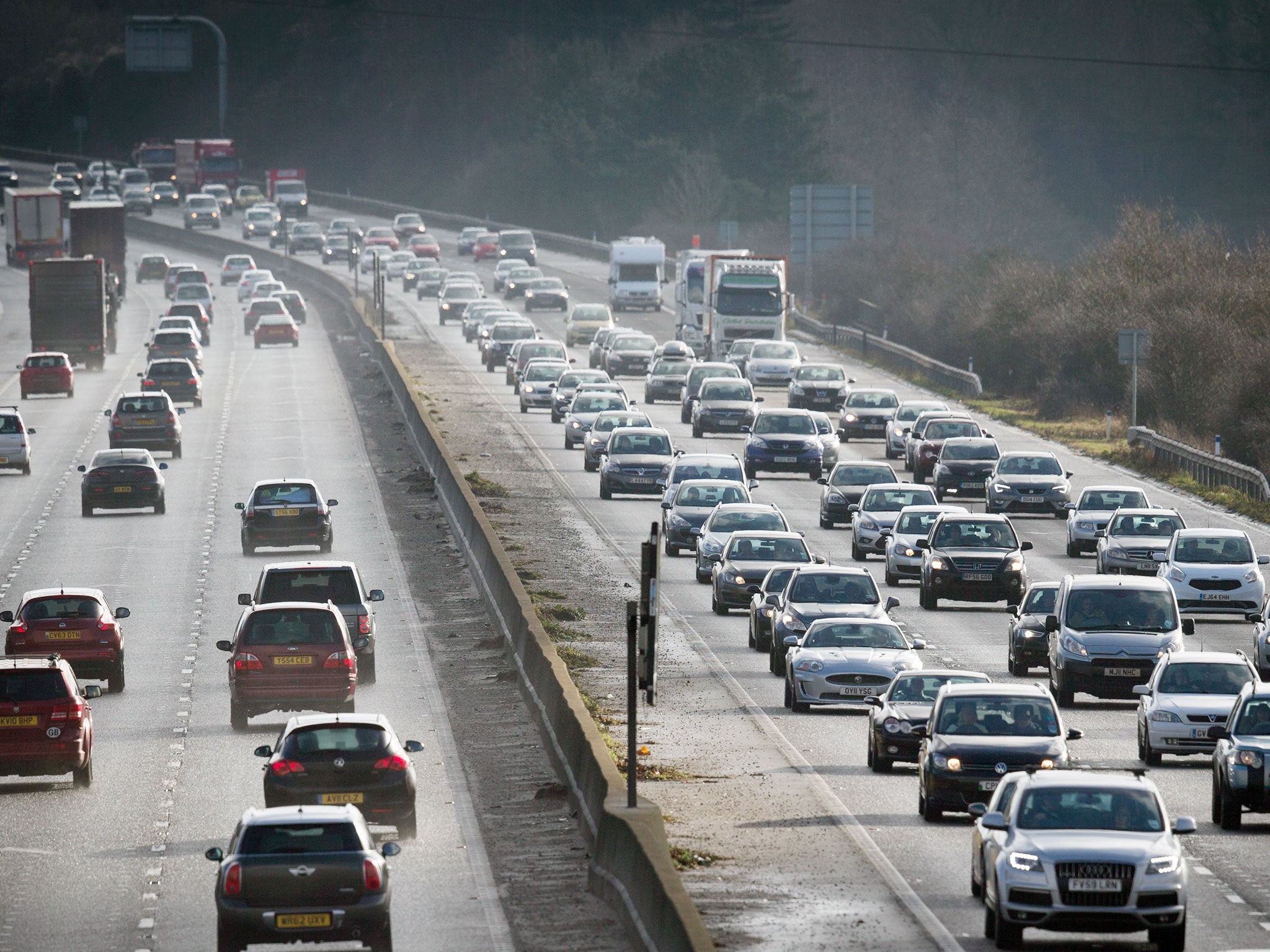Your support helps us to tell the story
From reproductive rights to climate change to Big Tech, The Independent is on the ground when the story is developing. Whether it's investigating the financials of Elon Musk's pro-Trump PAC or producing our latest documentary, 'The A Word', which shines a light on the American women fighting for reproductive rights, we know how important it is to parse out the facts from the messaging.
At such a critical moment in US history, we need reporters on the ground. Your donation allows us to keep sending journalists to speak to both sides of the story.
The Independent is trusted by Americans across the entire political spectrum. And unlike many other quality news outlets, we choose not to lock Americans out of our reporting and analysis with paywalls. We believe quality journalism should be available to everyone, paid for by those who can afford it.
Your support makes all the difference.London breached its own legal limit on air pollution for the whole of 2016 in just over seven days, according to worrying new figures.
Under EU rules the capital is allowed to exceed the maximum safe levels of nitrous oxide for 18 hours a year – an allocation it had burned through by the peak of the morning rush hour on Friday 8 January.
Putney High Street and Knightsbridge were the first two areas to report breaches. Last year Oxford Street reported a breach within two days of the new year beginning.
Last year the Committee on the Medical Effects of Air Pollutants warned the Government that as many as 60,000 early deaths a year are caused by air pollution across the UK.
The number, higher than previously thought, was calculated by including the effects of Nitrous Oxide in the death toll for the first time.
Despite mounting evidence of their dangers, motor vehicles are still permitted in city centres – including in central London.
Boris Johnson has plans to bring in an “ultra low emission zone” in central London but the plan will not be rolled out until 2020.
Additionally, that rule will not completely ban motor traffic – instead charging the most polluting vehicles £100 a day if they drive in central London.
Both Labour and Conservative 2016 London mayoral candidates Sadiq Khan and Zac Goldsmith have said they would like to pedestrianise Oxford Street – Britain’s most polluted street.
Cities around the world have taken more dramatic action to save lives, however. An emergency scheme was rolled out in Paris last year to ban half of cars from the road on alternating days until pollution subsided.
Simon Birkett, founder and director of campaign group Clean Air in London, said: “It is breathtaking that toxic air pollution has breached the legal limit for a whole calendar year within a few days.
“Worse, several air pollution monitors have been vying for the dubious honour of recording the first officially monitored breach of the nitrogen dioxide legal limit in the world in 2016.
“Oxford Street would have been first again if it hadn’t been ‘offline’ since last Sunday afternoon – possibly due to vandalism of the scientific equipment.”
Dr Penny Woods, chief executive of the British Lung Foundation, said: “We’ve seen pollution limits broken repeatedly in areas such as Oxford Street and Putney High Street over recent years. Given that so little has been done to address the crisis, it is no surprise that London has already reached its air pollution limits.
“Unless we clean up public transport by speeding up the introduction of cleaner buses and taxis, and invest in infrastructure for cyclists, we will be in this same position next year, and the year after.
“Air pollution causes tens of thousands of early deaths every year, increases the risk of lung cancer and impairs child lung development. Given the severity of the problem, immediate action must be taken by the government.”
Mr Johnson has cited air pollution from Heathrow airport as one reason for not expanding the airport.
His administration has also increased the number of hybrid buses serving Transport for London routes, improved alternative routes for bicycles, and is mandating new taxis to go zero-emission from 2018.

Join our commenting forum
Join thought-provoking conversations, follow other Independent readers and see their replies
Comments